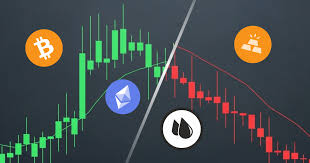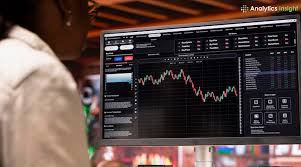
How to Do Trading in Today’s Financial Markets
Engaging in trading is more than just buying and selling assets; it requires knowledge, strategy, and discipline. Whether you’re interested in stocks, forex, cryptocurrencies, or commodities, understanding the fundamentals is crucial. For starters, how to do trading in crypto visit website to stay updated with the latest financial news and developments.
Understanding Trading Basics
Before diving into trading, it’s essential to grasp basic concepts such as market orders, limit orders, bid-ask spread, and the types of trading strategies that exist. In essence, trading involves speculating on the price movements of various assets, seeking to profit from fluctuations.
Types of Trading
There are various trading styles, each with its own unique approach:
- Day Trading: Traders buy and sell assets within the same trading day.
- Swing Trading: Traders hold positions for several days to capitalize on expected upward or downward market shifts.
- Position Trading: Long-term strategy where traders may hold positions for weeks, months, or even years.
- Scalping: A high-frequency trading strategy where traders enter and exit positions within minutes or seconds.
Choosing the Right Market

Deciding where to trade is crucial. Here’s an overview of popular markets:
- Stock Market: Involves buying shares of publicly traded companies.
- Forex Market: The largest financial market dealing with the exchange of currencies.
- Cryptocurrency Market: A relatively new market involving digital currencies like Bitcoin and Ethereum.
- Commodity Market: Involves trading physical goods like gold, oil, and agricultural products.
Making Informed Decisions
Research plays a vital role in trading success. Traders should analyze market trends, news, and events that can influence prices. Technical analysis, which involves charting price movements and using indicators, is a popular trading approach. Additionally, fundamental analysis looks at a company’s performance, economic indicators, and market conditions to make trading decisions.
Tools and Platforms for Traders
Choosing a reliable trading platform is essential. Many brokers offer robust platforms with advanced tools for analysis and execution. When selecting a platform, consider:
- Transaction Fees
- Available Trading Instruments
- User Interface
- Customer Support
Risk Management
Understanding and managing risk is foundational for long-term trading. Implementing strategies like stop-loss orders, position sizing, and diversification can help mitigate risks. Always define your risk tolerance before entering a trade, and never invest money you can’t afford to lose.

Developing a Trading Plan
A trading plan outlines your strategies, goals, risk management rules, and performance evaluation criteria. It serves as a roadmap, allowing you to stay focused and disciplined, especially in volatile markets.
Psychological Aspects of Trading
Trading can be emotionally taxing. Traders must manage their emotions to avoid impulsive decisions. Developing emotional discipline is vital; strategies include setting strict rules, keeping a trading journal, and taking breaks when feeling overwhelmed.
Continuous Learning and Adaptation
The markets are constantly changing, making it essential for traders to adapt their strategies and continue learning. Attending workshops, reading books, and following market news can enhance your trading skills. Being open to new ideas and methods is key to staying competitive in the ever-evolving financial landscape.
Final Thoughts
Trading can be a rewarding experience, both financially and intellectually, as long as one is prepared and informed. With the right knowledge, tools, and mindset, anyone can learn how to do trading in a way that aligns with their goals. Remember, success in trading does not come overnight; it requires practice, patience, and a commitment to ongoing education.
鹏友法律咨询|版权所有
发表评论
电子邮件地址不会被公开。 必填项已用*标注



